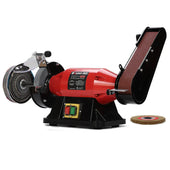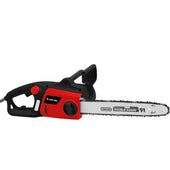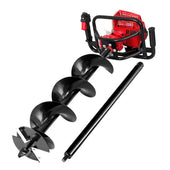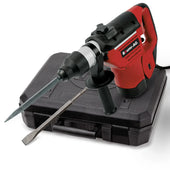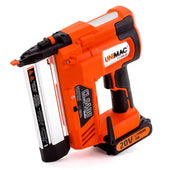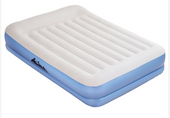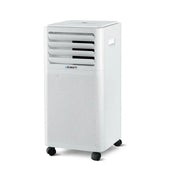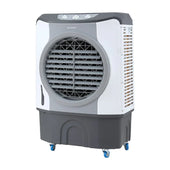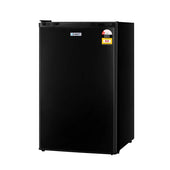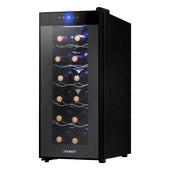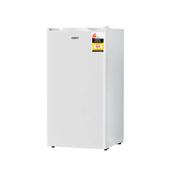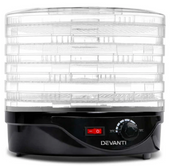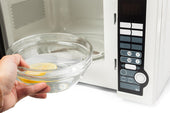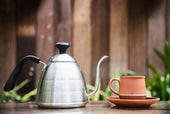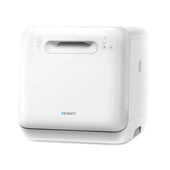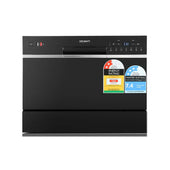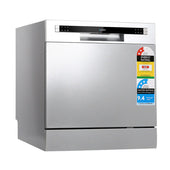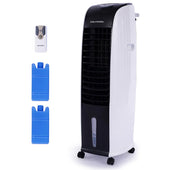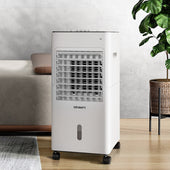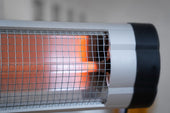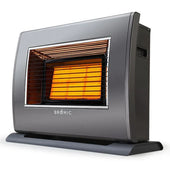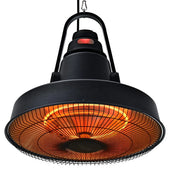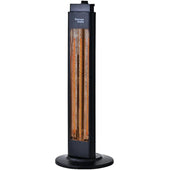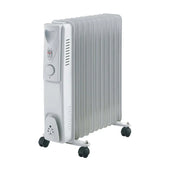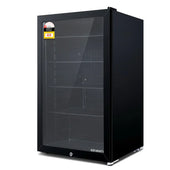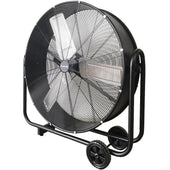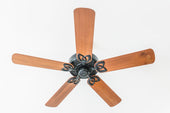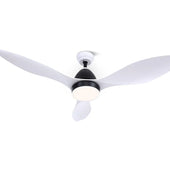Introduction: Why a Good Dish Rack is Essential for Kitchen Organisation
A dish rack serves as more than a simple drying station; it is a cornerstone of kitchen organisation. Without a proper dish rack, utensils, pots, and plates can pile up, causing clutter and reducing efficiency. A well-designed dish rack ensures that clean dishes dry effectively, minimising water spots and bacteria.
Key benefits of a good dish rack include:
- Space optimisation: Utilising vertical or compact designs frees up counter space.
- Ease of access: Keeping items organised for quicker retrieval.
- Preventing damage: Avoiding accidental chips or scratches by separating delicate items.
Selecting the right dish rack improves not only functionality but also the aesthetic appeal of the kitchen.
Factors to Consider When Choosing the Perfect Dish Rack
When selecting a dish rack, several factors help ensure functionality and compatibility with individual needs. First, size and capacity are vital; the rack should fit the available kitchen space while accommodating daily dishwashing loads. Material matters too, with stainless steel offering durability and rust resistance, while plastic provides lightweight options. Drainage design is a key consideration—look for racks with effective water drips or trays to prevent countertop pooling.
Ease of cleaning is another factor; racks with removable components simplify maintenance. Storage options, such as foldable or collapsible designs, suit smaller kitchens, and aesthetic appeal ensures harmony with existing decor.
Top Features to Look for in High-Quality Dish Racks
When selecting a dish rack, several features can enhance functionality, durability, and convenience. Consider the following key aspects:
Materials and Build Quality
- Choose racks made of rust-resistant stainless steel or durable plastic to ensure longevity.
- Opt for models with sturdy construction to hold heavier items securely.
Size and Capacity
- Select a size that fits available counter space and caters to household dishwashing needs.
- Look for designs with multiple tiers for additional storage without occupying extra space.
Drainage System
- Ensure the rack features an efficient drainage system for water runoff.
- Models with adjustable spouts or trays can prevent countertop water pooling.
Additional Compartments
- Seek racks with segregated sections for plates, bowls, and utensils.
- Added hooks for cups or knives can improve organisation.
Ease of Maintenance
- Pick a design with removable components for effortless cleaning.
- Non-slip bases simplify care and ensure steady placement.
Material Guide: Stainless Steel, Plastic, or Wood?
When selecting a dish rack, the material is a key factor influencing durability, aesthetics, and maintenance requirements. Each material offers distinct advantages:
- Stainless Steel: Known for its robustness, stainless steel resists corrosion and withstands heavy use, making it ideal for long-term durability. Its sleek finish complements modern kitchens, but it may require regular cleaning to avoid water stains.
- Plastic: Lightweight and budget-friendly, plastic dish racks are easy to manoeuvre and clean. However, over time, plastic may warp or discolour, especially under constant exposure to heat and moisture.
- Wood: Eco-friendly and visually warm, wooden dish racks bring charm to rustic or traditional kitchens. Regular sealing is vital to prevent water damage and mould growth, as wood is less resistant to prolonged moisture.
Each material caters to specific needs and preferences, ensuring a tailored solution.
Space-Saving Options: Compact Dish Racks for Small Kitchens
Maximising space in small kitchens often requires creative storage solutions. Compact dish racks are specifically designed to fit into tight spaces while maintaining functionality. These racks come in various styles, such as two-tier designs, over-the-sink models, and collapsible options, making them adaptable to different environments. Over-the-sink models utilise vertical space effectively, freeing up counter areas, while collapsible racks can be folded away when not in use.
Materials such as stainless steel and BPA-free plastic ensure durability and hygiene, catering to different preferences. Features like utensil holders and drainage systems efficiently manage water run-off, keeping countertops dry.
Multi-Tiered Dish Racks: Maximising Storage and Efficiency
Multi-tiered dish racks offer an innovative solution for kitchens with limited counter space. Featuring vertical layers, these racks utilise height rather than width, making the most of confined areas. Their design allows for separate compartments to accommodate plates, bowls, glasses, and cutlery, ensuring better organisation.
Key Advantages:
- Space Efficiency: Vertical stacking creates more room for other kitchen tasks.
- Enhanced Organisation: Segmented tiers help categorise dishware effectively.
- Increased Capacity: Holds more items without occupying additional surface area.
Some models incorporate draining trays or adjustable shelves, adding further convenience. Stainless steel or durable plastic frames reinforce stability, catering to varying household needs. Whether for compact city apartments or cosy homes, multi-tiered racks redefine practicality in dish management.
Best Dish Racks for Large Families and Heavy Use
When it comes to large families, a sturdy and spacious dish rack is non-negotiable. These options are designed to handle heavy loads while accommodating a variety of dish sizes, cookware, and utensils efficiently.
Features to Look For:
- Multi-tiered Designs: Opt for racks with multiple levels to maximise drying space. This is especially useful for catering to piles of plates, bowls, and glasses at once.
- Durable Materials: Stainless steel or high-quality plastic ensures longevity and resistance to wear and tear.
- Cutlery Compartments: Separate sections for utensils help organise drying and prevent clutter.
- Drainage Systems: Built-in spouts or trays guide water directly into the sink, reducing mess.
A thoughtful layout and high capacity are essential for families relying on functionality and ease of use.
Elegant and Stylish Dish Racks for Modern Kitchens
Dish racks have evolved beyond mere functionality, with sleek designs now catering to modern aesthetics. For contemporary kitchens, these racks not only save space but also complement the decor.
Key Features of Stylish Dish Racks:
- Materials: Stainless steel, bamboo, and durable plastic offer a chic yet practical finish.
- Designs: Minimalist two-tier racks maximise space, while single-layer options fit smaller countertops.
- Colours: Neutral tones like black, white, or metallic blend seamlessly into modern interiors.
Additional Enhancements:
- Integrated Drainage Systems: Prevent water pooling.
- Multi-Functionality: Hold plates, mugs, and cutlery simultaneously.
- Collapsible Options: Ideal for adaptable kitchen spaces.
These racks redefine organisation and elevate the kitchen’s overall aesthetic effortlessly.
Innovative Designs: Collapsible and Adjustable Dish Racks
Collapsible and adjustable dish racks are revolutionising the way people organise their kitchens, offering incredible flexibility. These designs adapt seamlessly to varying space constraints, making them ideal for compact kitchens or multipurpose counters. Collapsible models are crafted to fold flat when not in use, allowing for efficient storage in drawers or cabinets. Adjustable racks, on the other hand, cater to diverse needs by extending or contracting to fit specific dish sizes or quantities.
Features often include:
- Stackable tiers to maximise vertical space.
- Moveable dividers for securely holding plates, bowls, or cups.
- Integrated drainage systems to prevent water buildup.
This dual functionality enhances both convenience and storage optimisation.
Eco-Friendly and Sustainable Dish Rack Options
For those prioritising environmentally friendly choices, a variety of sustainable dish rack options are available. These dish racks are crafted from renewable or recycled materials, reducing their ecological footprint.
- Bamboo Dish Racks: Bamboo is a renewable resource, making it an excellent alternative to plastic. These racks are durable, lightweight, and naturally resistant to water.
- Recycled Metal Designs: Dish racks constructed from recycled stainless steel or aluminium offer longevity and a sleek aesthetic while promoting sustainability.
- Biodegradable Plastic Options: Some manufacturers use plant-based plastics, ensuring reduced environmental impact when the product reaches the end of its lifespan.
Eco-friendly finishes and treatments ensure these products maintain utility without compromising sustainability goals. Opting for these racks supports a greener future while maintaining functionality.
Tips for Maintaining and Cleaning Your Dish Rack
- Regular Cleaning: Rinse the dish rack weekly to remove trapped residues. Use warm water and mild dish soap for effective cleansing.
- Combat Mould and Mildew: Inspect corners and crevices for mould or mildew. Clean with a mixture of vinegar and water to inhibit bacteria growth.
- Dry Thoroughly: After washing, allow the rack to air-dry completely to prevent rust or water stains, especially for metal racks.
- Declutter Periodically: Remove unused or damaged components to maintain cleanliness and optimise space.
- Protect Wood and Bamboo: For wooden racks, avoid prolonged exposure to water. Use mineral oil occasionally to maintain durability.
Conclusion: Finding the Best Dish Rack for Your Needs
Selecting the ideal dish rack involves evaluating several factors to match your specific requirements. Consider the size of your kitchen space and ensure the rack fits comfortably alongside other essentials. Material quality should align with durability and ease of maintenance, whether stainless steel, plastic, or bamboo. Features like drip trays, swivel spouts, or collapsible designs for storage can influence practicality. Dish rack capacity should suit your household size; larger families may need multiple tiers. Portability or compatibility with sinks and countertops are also important. Keeping these aspects in mind will help narrow down options for a space-saving solution tailored to individual needs.



